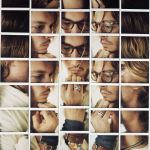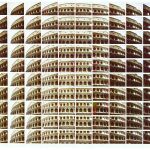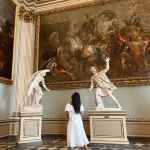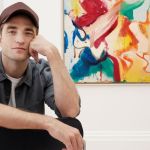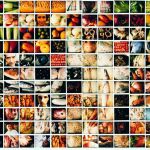
Maurizio Galimberti interview
Il volto della polaroid per antonomasia
November 8th, 2013
1. When and how did you discovered that polaroid would become the "main weapon" of your art expression?
I really started to understand it around 1990. In 1988 I started attending art Bolognesi movements and i already starting to ripen an interest in Polaroid, then realizing that it would becomes my art because it allowed to me and contaminate with the history of art in the most direct and forceful.
2. Each of your works seems to want to say something that goes beyond the simple snap, thank to the different techniques that are used by you. Can you explain to us something about your manipulation image methods?
The manipulation of the images run in two different ways: one is the mosaic, as the breakdown of reality, a contamination between futurism and surrealism, one of these are "La Città che sale" by Boccioni and "Il nudo che scende le scale" by Duchamp, then the subject is not moving and the movement is provided by scanning the image. About the second technique of handling, use the wooden sticks that going to change the chemistry of the Polaroid, its a form of manipulation much closer to the painting, not just for purely aesthetic, but it is for me a real physical need, because using Polaroid, you need to interact also working your sign, cause it is part of your project.
I can say in conclusion to your question is that manipulation is more design, never just for aesthetic show, but is a real project that gets contaminated very strongly with the story.
3. Landscape and portrait, what drew your choose to these two subjects, different from each other and what through your eyes you want to convey us?
I started doing portraits and are subsequently passed on to the landscapes, basically because my movement design is not tied only to a face but to a spatial concept, where space can be represented by a face or architecture, and in both cases it is important, for the contamination, (That which I spoke previously), "play music": divide the space as if they were musical notes and playing them; multiplying and repeating creates an actual musical score.
4. A question that concerns us very close: What was your relationship with New York City and what you feel on the artistic/emotional level? Is there any other city dearest to you?
New York, for one like me that makes my type of photography, it is definitely the best place ever, the architecture of New York City is the top!
On the emotional level the city has given to me the desire to "eat the photograph" its extremely interesting, because when your eyes going upward surely you can run into imaginations, I call it a endless laboratory for images. The photograph in New York, but in the same way in Venice, has an amazing history; Venice, in my opinion, is a bit like New York, but as a New York 's oldest, timeless. Another city that fascinates me is Paris, for my passion to artistic avant-garde and Duchamp.
5. There isn't a simple Polaroid that you use, tell us about your work tools.
Actually It's a common Polaroid, except that when I do portraits, then you will see it in my performance, I put my camera in this box that is called Collector, you need to make the ratio 1:1, as if I had a macro lens, which diffuses the light as from the flash.
I believe that the tools are good companions and we have to help, but what really matters is what we have inside.
6. You have photographed many celebrities and notorious personalities from the cinema, art and even fashion world.
Who was the most character that have impressed you and why? in particular, all the "Big Old Men ", in particular three writers: Lala Romano, Mario Luzi and Dario Fo.
If I had to choose one, I would say Dario Fo, initially I not loved him so much cause I considered him too overtly in political thinking, and above all I didn't know at the art of his work, but now, I think he is the new Shakespeare of the last century, he has a great culture, he is brilliant, he is chameleon and a guide, and I'm sad when i have finished too early to work with him and not being able to spend time together.
Another character that struck me was Robert de Niro, I remember that him in the beginning was very angry because he did not want his portrait was made by me and then eventually I was even commissioned portraits of his entire family.
Initially him, thinking that was just a game, he was a bit ' stiff to me. We were at the Tribeca Film Festival and I was the Polaroid testimonial and he, for satisfy the sponsors should he accept my portrait, at one point he was also to send everything out of business, then, later, he accepted to be portrayed by me and apologized, and even asked me to portray his family too.
So I conclude and I say that this famous people are basically simple, with their culture, in their genius and still be in their characters, what then are still transmit to us every day.
7. What is your favorite opera?
"The Vucciria", was my first professional job, in 92's, commissioned by Enzo Barbarino, he who in that time, organized the Festival of Photography, so he is a very important character in the environment.
At that time there was the murder of Falcone and Borsellino, Barbarino asked me to tell the positivity of Sicily, which was not only represented by Falcone and Borsellino story, but is a land inhabited by Siciliani, good people.
I chose to represent " Vucciria ", a typical local market, no longer in use, both because of the lure of Gottuso work, either because the market for an Italian people it means: the taste, the flavors, that are something fundamental and represent our land. Work on this opera excited me a lot and It was penetrated under the skin. Another work, dear to me, is the portrait of Johnny Depp, because it went up on the cover of The Times of London, it was a great satisfaction for my professional career.
Ph by Marco Rich Albanese and Maurizio Galimberti Archive


















































